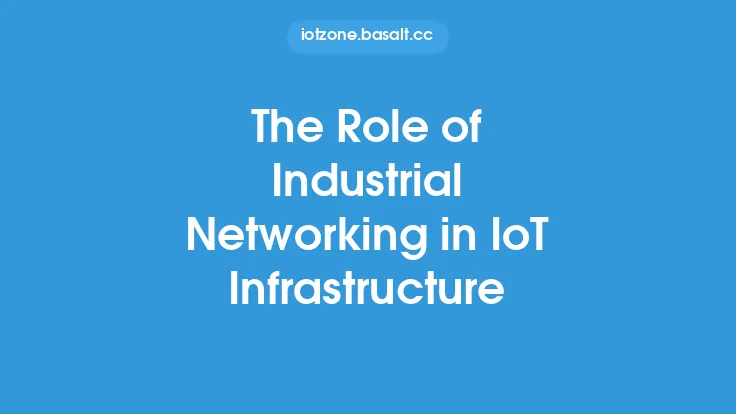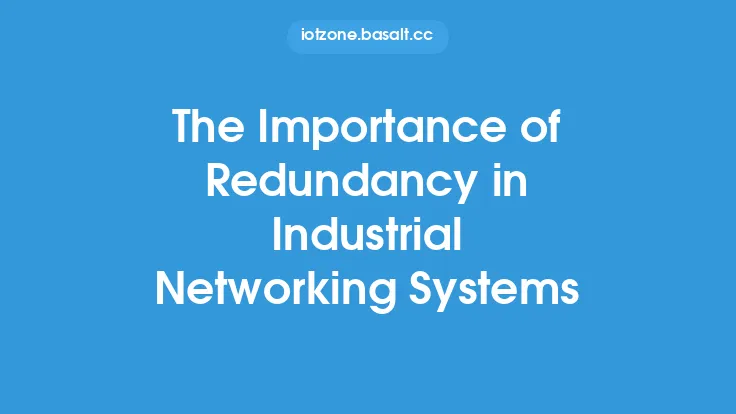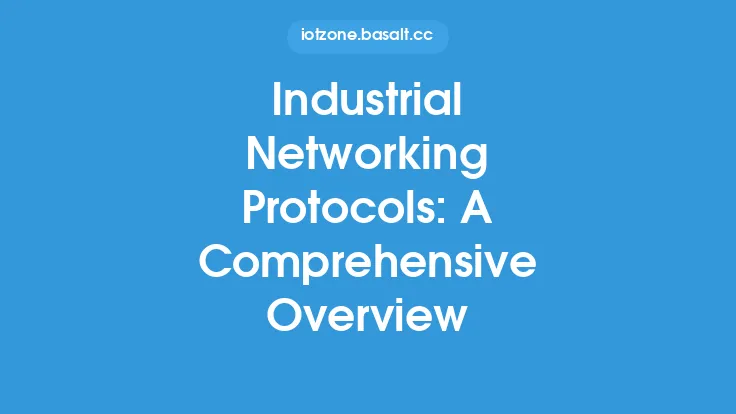The increasing demand for reliable, high-speed, and secure communication in industrial settings has led to the widespread adoption of Industrial Ethernet. This technology has become the backbone of modern industrial networking, enabling the efficient and reliable transfer of data between devices, machines, and systems. Industrial Ethernet is a variant of the traditional Ethernet technology, specifically designed to meet the unique requirements of industrial environments, such as harsh temperatures, vibrations, and electromagnetic interference.
Introduction to Industrial Ethernet
Industrial Ethernet is built on the same principles as traditional Ethernet, using the same protocols and standards, but with modifications to ensure reliability, durability, and performance in industrial settings. It uses twisted-pair or fiber-optic cables to connect devices, and its infrastructure is designed to withstand the rigors of industrial environments. Industrial Ethernet supports a wide range of protocols, including TCP/IP, HTTP, and FTP, making it compatible with various devices and systems. Its high-speed data transfer rates, ranging from 10 Mbps to 10 Gbps, enable real-time communication and control, which is critical in industrial applications.
Key Characteristics of Industrial Ethernet
Industrial Ethernet has several key characteristics that distinguish it from traditional Ethernet. One of the most important is its ability to operate in harsh environments, with temperatures ranging from -40°C to 70°C, and resistance to vibrations, humidity, and electromagnetic interference. Industrial Ethernet devices are also designed to be more reliable and durable, with mean time between failures (MTBF) of up to 20 years or more. Additionally, Industrial Ethernet supports various redundancy protocols, such as ring and chain topologies, to ensure continuous operation in case of device or cable failure. Its support for Quality of Service (QoS) and traffic prioritization also ensures that critical data is transmitted in real-time, while less critical data is transmitted at a lower priority.
Industrial Ethernet Standards and Protocols
Industrial Ethernet uses various standards and protocols to ensure interoperability and compatibility between devices from different manufacturers. Some of the most common standards include IEEE 802.3, which defines the Ethernet protocol, and IEEE 802.1Q, which defines the VLAN (Virtual Local Area Network) protocol. Industrial Ethernet also supports various industrial protocols, such as PROFINET, EtherCAT, and Modbus TCP, which are used for device communication and control. The use of these standards and protocols enables seamless communication between devices, machines, and systems, and ensures that Industrial Ethernet networks can be easily integrated with existing industrial infrastructure.
Applications of Industrial Ethernet
Industrial Ethernet has a wide range of applications in various industries, including manufacturing, oil and gas, power generation and distribution, transportation, and healthcare. In manufacturing, Industrial Ethernet is used for machine-to-machine communication, process control, and data acquisition. In oil and gas, it is used for monitoring and controlling wells, pipelines, and refineries. In power generation and distribution, Industrial Ethernet is used for monitoring and controlling power grids, substations, and transmission lines. Its applications also extend to transportation, where it is used for monitoring and controlling traffic management systems, and in healthcare, where it is used for monitoring and controlling medical devices and equipment.
Benefits of Industrial Ethernet
The use of Industrial Ethernet offers several benefits, including increased reliability, improved performance, and reduced costs. Its high-speed data transfer rates and low latency enable real-time communication and control, which is critical in industrial applications. Industrial Ethernet also supports various redundancy protocols, which ensure continuous operation in case of device or cable failure. Its use of standard protocols and interfaces also enables easy integration with existing industrial infrastructure, reducing the costs and complexity associated with network deployment and maintenance. Additionally, Industrial Ethernet enables remote monitoring and control, which reduces the need for on-site personnel and improves overall system efficiency.
Challenges and Limitations of Industrial Ethernet
Despite its many benefits, Industrial Ethernet also has several challenges and limitations. One of the main challenges is ensuring the security of Industrial Ethernet networks, which are vulnerable to cyber threats and attacks. The use of Industrial Ethernet also requires specialized knowledge and skills, which can be a challenge for organizations with limited IT resources. Additionally, Industrial Ethernet devices and infrastructure can be expensive, especially for large-scale deployments. The use of Industrial Ethernet also requires careful planning and design, to ensure that the network is scalable, reliable, and secure. Furthermore, Industrial Ethernet networks can be affected by electromagnetic interference, radio-frequency interference, and other environmental factors, which can impact their performance and reliability.
Future of Industrial Ethernet
The future of Industrial Ethernet is promising, with ongoing advancements in technology and standards. The increasing adoption of Industry 4.0 and the Industrial Internet of Things (IIoT) is driving the demand for Industrial Ethernet, which is expected to play a critical role in enabling the efficient and reliable transfer of data between devices, machines, and systems. The development of new standards and protocols, such as Time-Sensitive Networking (TSN) and OPC UA, is also expected to enhance the performance and capabilities of Industrial Ethernet. Additionally, the increasing use of cloud computing, artificial intelligence, and machine learning is expected to drive the adoption of Industrial Ethernet, as organizations seek to leverage these technologies to improve their operations and competitiveness. As the industrial landscape continues to evolve, Industrial Ethernet is likely to remain a critical component of industrial networking, enabling the efficient and reliable transfer of data and driving business success.





